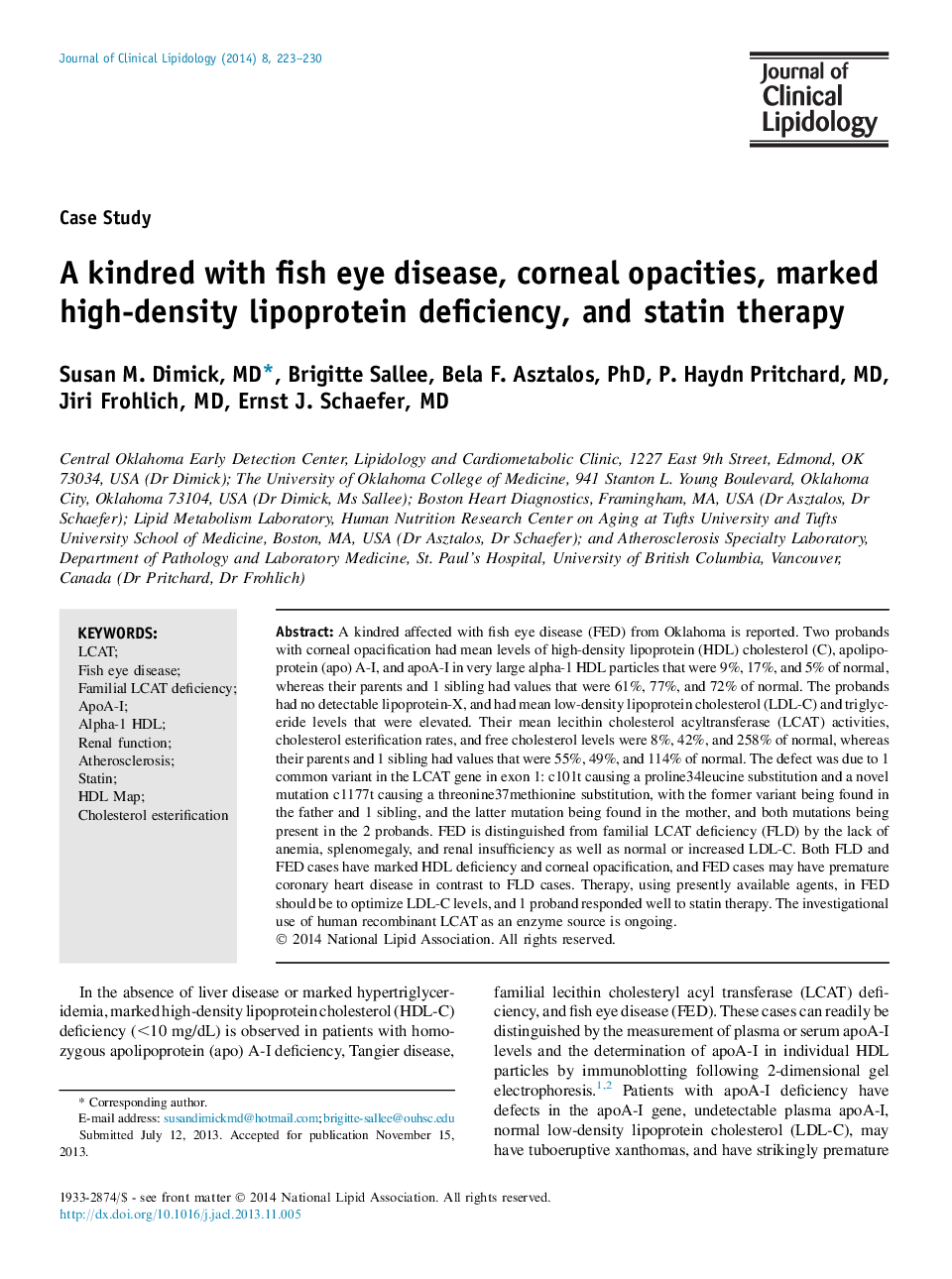| Article ID | Journal | Published Year | Pages | File Type |
|---|---|---|---|---|
| 2966276 | Journal of Clinical Lipidology | 2014 | 8 Pages |
►Genetic causes of lipoprotein disorders should be recognized by all providers.►Physical and laboratory findings of Fish Eye Disease and screening families of patients.►FED familiarity by PCP, cardiometabolic, and ophthalmology/optometry specialists.►Risks associated with this genetic anomaly; differences from similar LCAT disorders.►New human recombinant LCAT provides options in FLD-related diseases.
A kindred affected with fish eye disease (FED) from Oklahoma is reported. Two probands with corneal opacification had mean levels of high-density lipoprotein (HDL) cholesterol (C), apolipoprotein (apo) A-I, and apoA-I in very large alpha-1 HDL particles that were 9%, 17%, and 5% of normal, whereas their parents and 1 sibling had values that were 61%, 77%, and 72% of normal. The probands had no detectable lipoprotein-X, and had mean low-density lipoprotein cholesterol (LDL-C) and triglyceride levels that were elevated. Their mean lecithin cholesterol acyltransferase (LCAT) activities, cholesterol esterification rates, and free cholesterol levels were 8%, 42%, and 258% of normal, whereas their parents and 1 sibling had values that were 55%, 49%, and 114% of normal. The defect was due to 1 common variant in the LCAT gene in exon 1: c101t causing a proline34leucine substitution and a novel mutation c1177t causing a threonine37methionine substitution, with the former variant being found in the father and 1 sibling, and the latter mutation being found in the mother, and both mutations being present in the 2 probands. FED is distinguished from familial LCAT deficiency (FLD) by the lack of anemia, splenomegaly, and renal insufficiency as well as normal or increased LDL-C. Both FLD and FED cases have marked HDL deficiency and corneal opacification, and FED cases may have premature coronary heart disease in contrast to FLD cases. Therapy, using presently available agents, in FED should be to optimize LDL-C levels, and 1 proband responded well to statin therapy. The investigational use of human recombinant LCAT as an enzyme source is ongoing.
